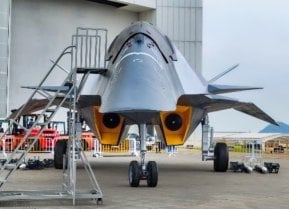The F-14 Tomcat Fighter Question Explained in 3 Words
The F-14 Tomcat is one of the most iconic fighter jets in aviation history, largely due to its prominent role in the 1986 film "Top Gun." While the aircraft performed admirably during its service, it was eventually retired by the U.S. Navy in 2006 and replaced by the more advanced F-18 Hornet.
Retired Too Early? The F-14 Tomcat is one of the most iconic fighter jets in aviation history, largely due to its prominent role in the 1986 film "Top Gun." While the aircraft performed admirably during its service, it was eventually retired by the U.S. Navy in 2006 and replaced by the more advanced F-18 Hornet.

-Designed as both an air superiority fighter and a long-range naval interceptor, the F-14 featured variable swept wings controlled by a Central Air Data Computer (CADC).
-Despite its capabilities, rapid advancements in aviation technology rendered the F-14 outdated, leading to its retirement in favor of newer aircraft with stealth technology and enhanced connectivity.
F-14 Tomcat: The Iconic Fighter Jet That Defined an Era
The F-14 Tomcat is one of the most iconic fighter jets in aviation history, but the F-14's transcendent status comes not from the jet’s performance (although the jet performed admirably).
Rather, the F-14’s status was largely cemented through cinematic depiction – in 1986s highest-grossing film, Top Gun.
If you’re reading an article about the F-14, you probably don’t need much of a refresher on the Top Gun synopsis. The film launched Tom Cruise into superstardom, an orbit he still inhabits almost forty years later. But along with Tom Cruise, the F-14 was launched from the realm of military aviation and into the realm of popular culture. The swept-wing, two-seater became emblematic of US air power over land and sea at the height of the Cold War – the chosen vessel of Tom Cruise and Val Kilmer and Anthony Edwards.
And while the F-14 is still remembered for its on-screen exploits, the US Navy no longer operates the jet (production ceased in 1991, and the Navy retired the jet in 2006), yet some question whether the plane was retired too early.
Was the F-14 retired too early?
The F-14 was phased out in favor of the F-18 Hornet, which still serves today, and is a more advanced platform than the F-14.

The F-14 first flew in 1970 and made its first deployment in 1974, meaning the jet remained in service for over 30 years.
That’s not bad for a fourth-generation fighter that debuted while America was still embroiled in the Vietnam War.
To meet the versatile demands of the Navy, the F-14 was designed to be both an air superiority fighter and a long-range naval interceptor.
So, the F-14 could dogfight, or when needed, the F-14 could reach high speeds and engage targets from a distance.
Enabling the wide mission profile was the swept-wing design. When the jet needed to be maneuverable, or operate at relatively low speeds, i.e., in a dogfighting situation, the wings could sweep forward, to create a higher profile and increase lift/drag. When the jet needed to be fast, to zoom, i.e., in an intercept situation, the wings would be swept back to create a lower profile with decreased lift/drag.
The F-14’s wings could be varied from between 20 degrees and 68 degrees in flight. The wing sweep was automatically controlled using the Central Air Data Computer (CADC), which maintained an optimal lift-to-drag ratio depending on the aircraft's speed. And the pilot had the option of overriding the CADC if they wanted.

Curiously, during testing, the F-14 was flown with one wing swept forward, and one wing swept back – to make sure the jet could operate in the case of such a malfunction in flight. The F-14 pulled it off, flying in the unorthodox configuration.
Growing outdated
The F-14 was a venerable machine, but technology changed rapidly over the course of the F-14s service. Consider the jets that rolled off the assembly line while the F-14 was in service. The B-2 Spirit. The B-1 Lancer. The F-22 Raptor. The F-117 Nighthawk. Stealth technology became a standard feature. Interconnectivity became a standard feature. The F-14 grew outdated. So, the F-18 was an appropriate upgrade at the appropriate time.
About the Author: Harrison Kass
Harrison Kass is a prolific defense writer with over 1,000 published articles. An attorney, pilot, guitarist, and minor pro hockey player, Harrison joined the US Air Force as a Pilot Trainee but was medically discharged. Harrison holds a BA from Lake Forest College, a JD from the University of Oregon, and an MA from New York University. Harrison listens to Dokken. Email the Author: [email protected].
All images are from Shutterstock.


